Culture
The Amazing People Who Made MB&F’s Legacy Machines, Amazing
Culture
The Amazing People Who Made MB&F’s Legacy Machines, Amazing
By now the legend of Büsser has become popular horological folklore. Finding himself a young CEO at the helm of Harry Winston amid a crazed resurgence in complicated watchmaking, but with zero in-house acumen of his own, he tapped his friends like François-Paul Journe, Vianney Halter, Felix Baumgartner and Martin Frei, offering them the chance of a lifetime — carte blanche to create the wildest, most innovative watches the world had ever seen. This project he christened “Opus” and, suddenly, thanks to the support of equally dynamic partners such as Michael Tay of The Hour Glass, the world suddenly realized the extraordinary beauty and singular creativity of independent watchmaking.
Clearly, Büsser had in some way already recognized this and astutely understood that a more classic Max Büsser watch would gain him an entirely new audience. So in the first year of the second decade of the third millennium, Büsser unveiled the Legacy Machines that he would have created if he had lived in the time of Ferdinand Berthoud and Antide Janvier. These were watches that heralded a level of finish that could only be described as sublime, that demonstrated emphatically that incredible creativity could coexist with classic values. They were watches that showed that MB&F was not a mono product brand and that Max Büsser’s imagination was limitless.
Says Michael Tay, “While we were all big fans of the Horological Machines, Max’s Legacy Machines caught us all off guard. But that’s the thing about Max — he is one of the smartest people I know and is tapped into the horological zeitgeist in a way that few others are. This is what has always defined him as a trailblazer; he is aware of where the world is heading and what people want even before we are able to express it ourselves. The Legacy Machines demonstrate a depth of knowledge for classic watchmaking that was incredibly impressive. They are, to me, some of the most beautiful and collectable watches created in the last decade.”
Speaking to Max on the 10-year anniversary of the Legacy Machine and the celebratory launch of the LMX, I became aware of the deeply human story that underlies this decade of watchmaking brilliance. So much so that I wanted to tell the story of these amazing watches in Max’s own words — not in terms of the technical details behind each timepiece, but of his relationship with the human beings that helped him create them or that inspired him. Here are some of the incredible stories that made the Legacy Machine project such a success. Albeit abridged here in written form, you should watch the following two part video interview with Max for the complete depth of these stories.
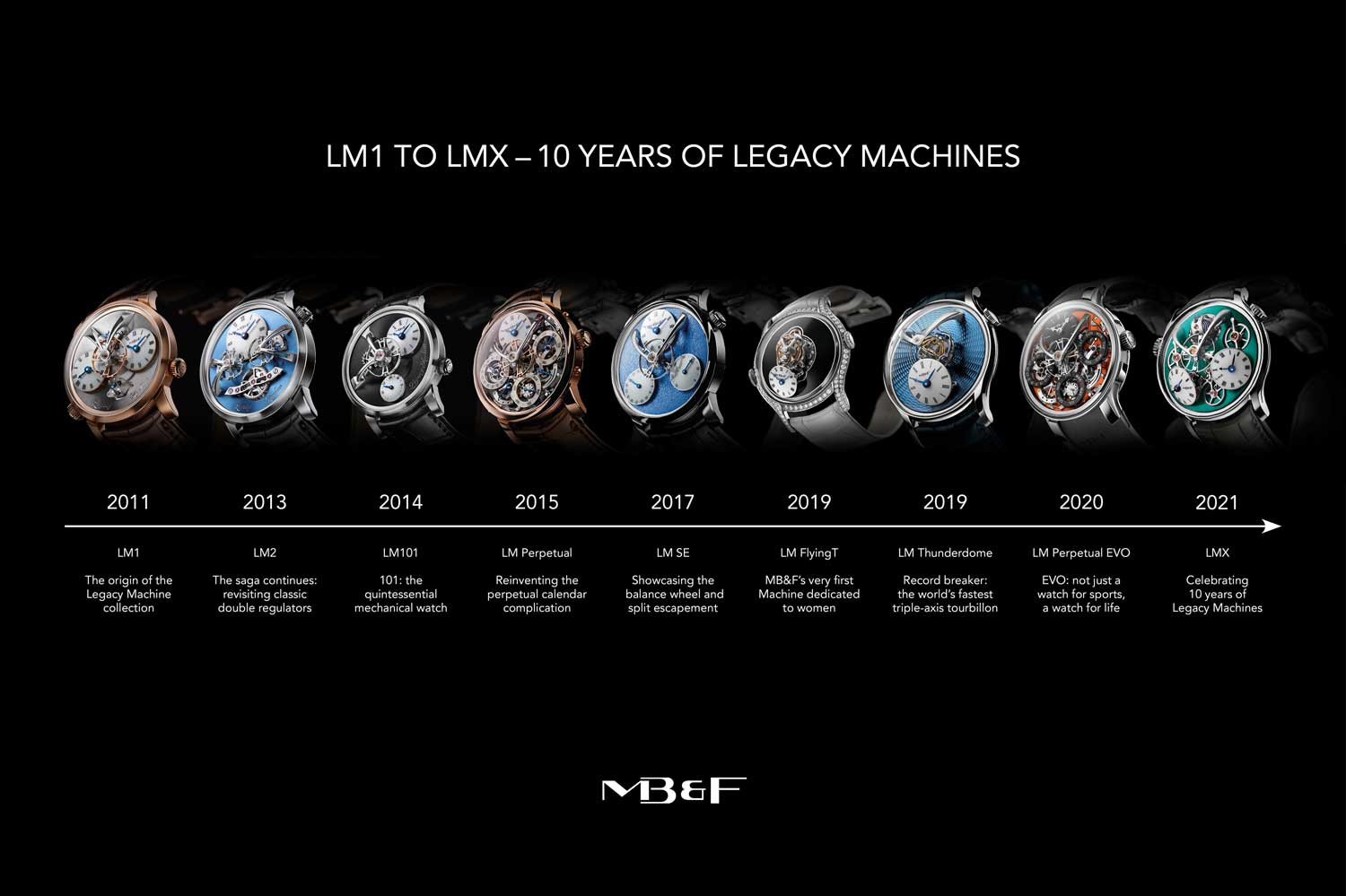
The MB&F Legacy Machines' Timeline
Editor’s Note: The remaining article is reproduced here as the stories that were narrated by Max Büsser
The Legacy Machine no.1: Jean-François Mojon & Kari Voutilainen
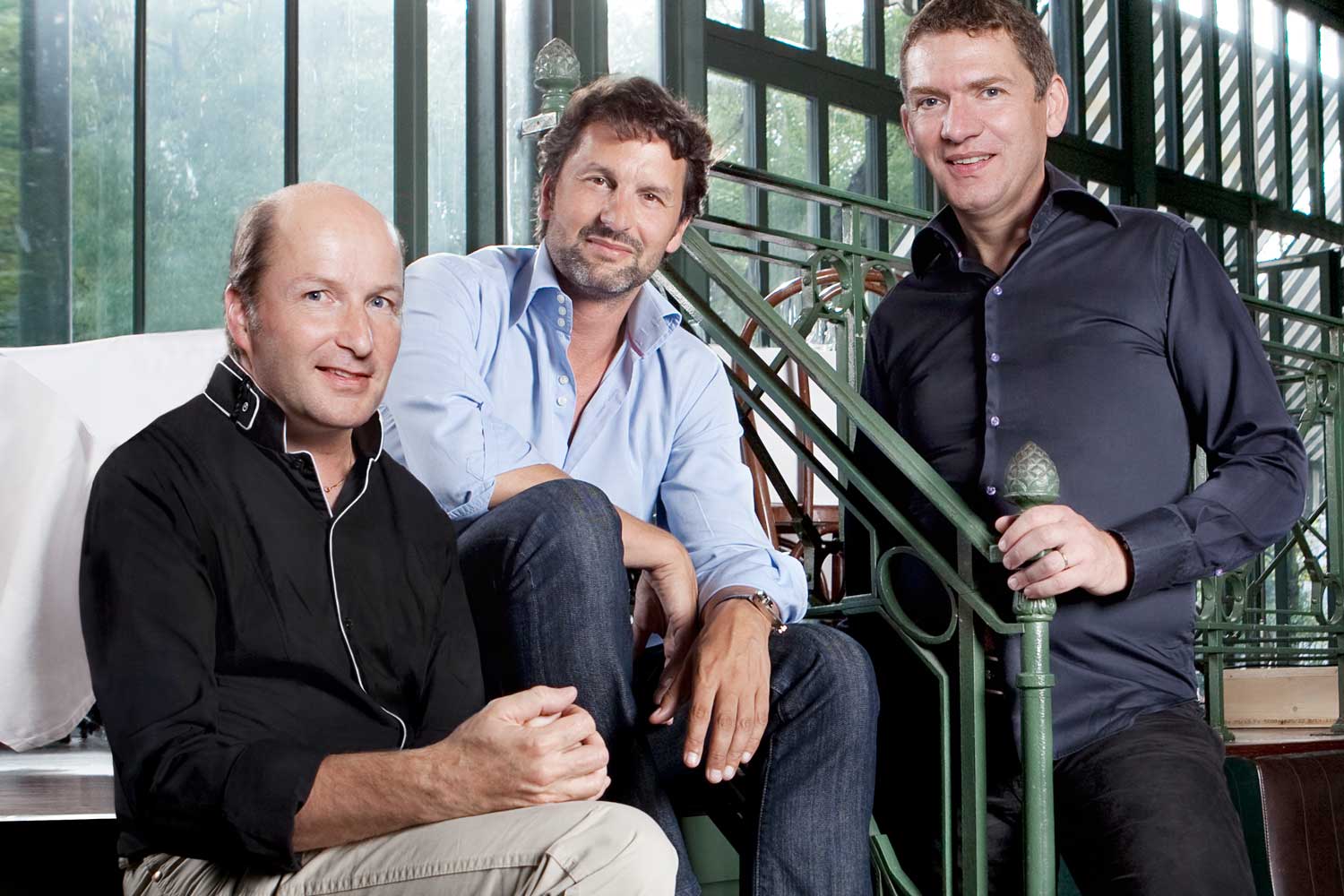
Max Büsser (center) with Kari Voutilainen (L) and Jean-François Mojon (R), who ultimately made the Legacy Machine 1 a reality
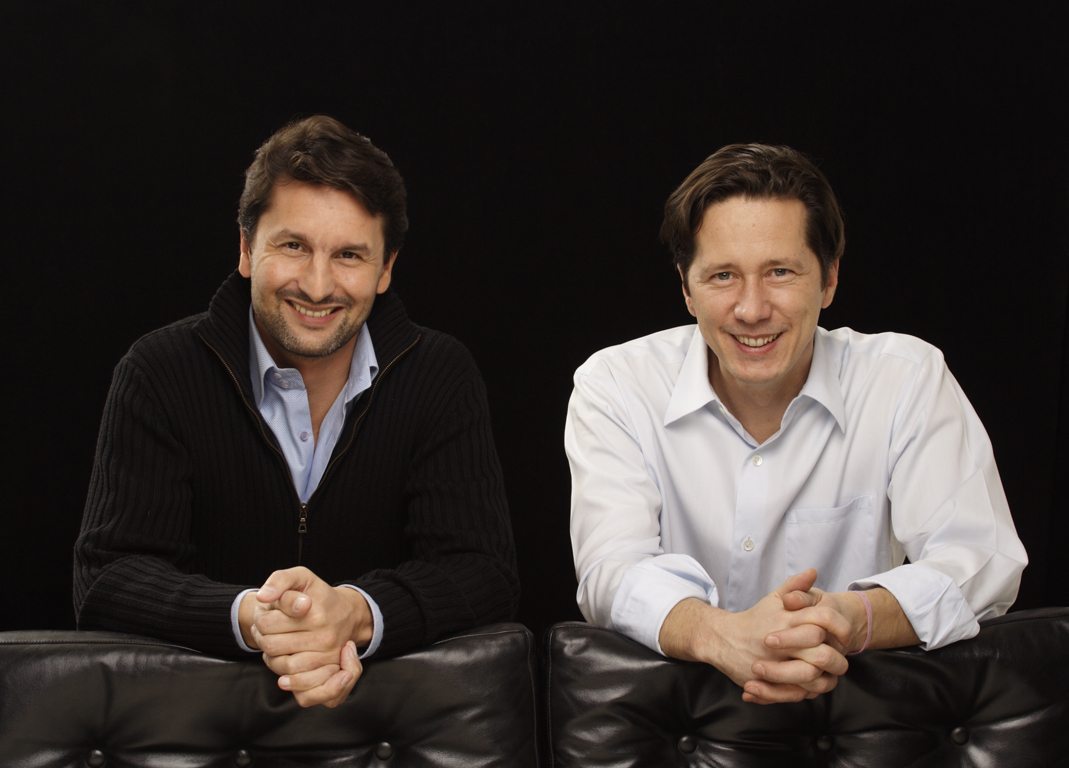
Circa 2007: Max with one of his closest friends and superbly talented watch designer, Eric Giroud who was instrumental in the design of a multitude of MB&F's timepieces including the LM1 (©MB&F)
No matter what we did, we couldn’t move away from that iconography and finally I said, “Alright, let’s just design a round case with the balance wheel in the center.” As soon as I said that, Eric, who is my best friend and was best man at my wedding, looked at me, cursed and he stormed out of the room. Another member of my team spoke up and said, “Max, we didn’t start MB&F to make round watches.”
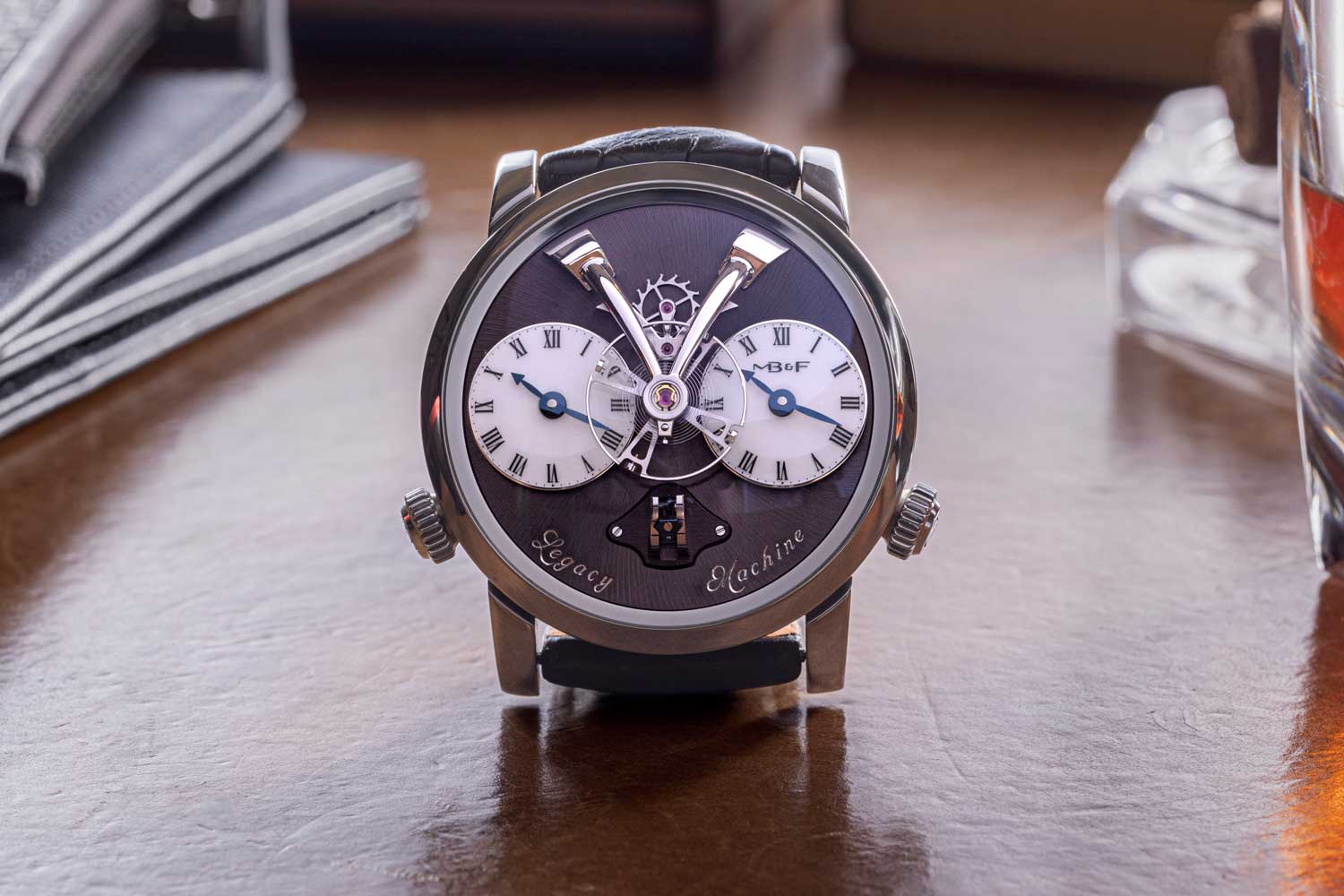
The Legacy Machine No. 1, launched in 2011 was made possible by the contributions of industry greats such as Eric Giroud, Jean-François Mojon and Kari Voutilainen (©Revolution)
I met Jean-François through my friend Denis Giguet, who created a brand called Manufacture Contemporaine du Temps (MCT). I really liked Jean-François, and I was impressed with his ability to deliver both innovation and reliability. I brought my design to him, and he loved the idea. But he said, “If we really want to get this movement right in terms of the type of finish with the correct historical codes, then we should get Kari Voutilainen involved. He has restored so many of the original pieces.” Jean-François and Kari had previously collaborated on the detent escapement watch for Urban Jurgensen and were very good friends, and Jean-François had been blown away by Kari’s knowledge of classic watchmaking from the 18th and 19th centuries.
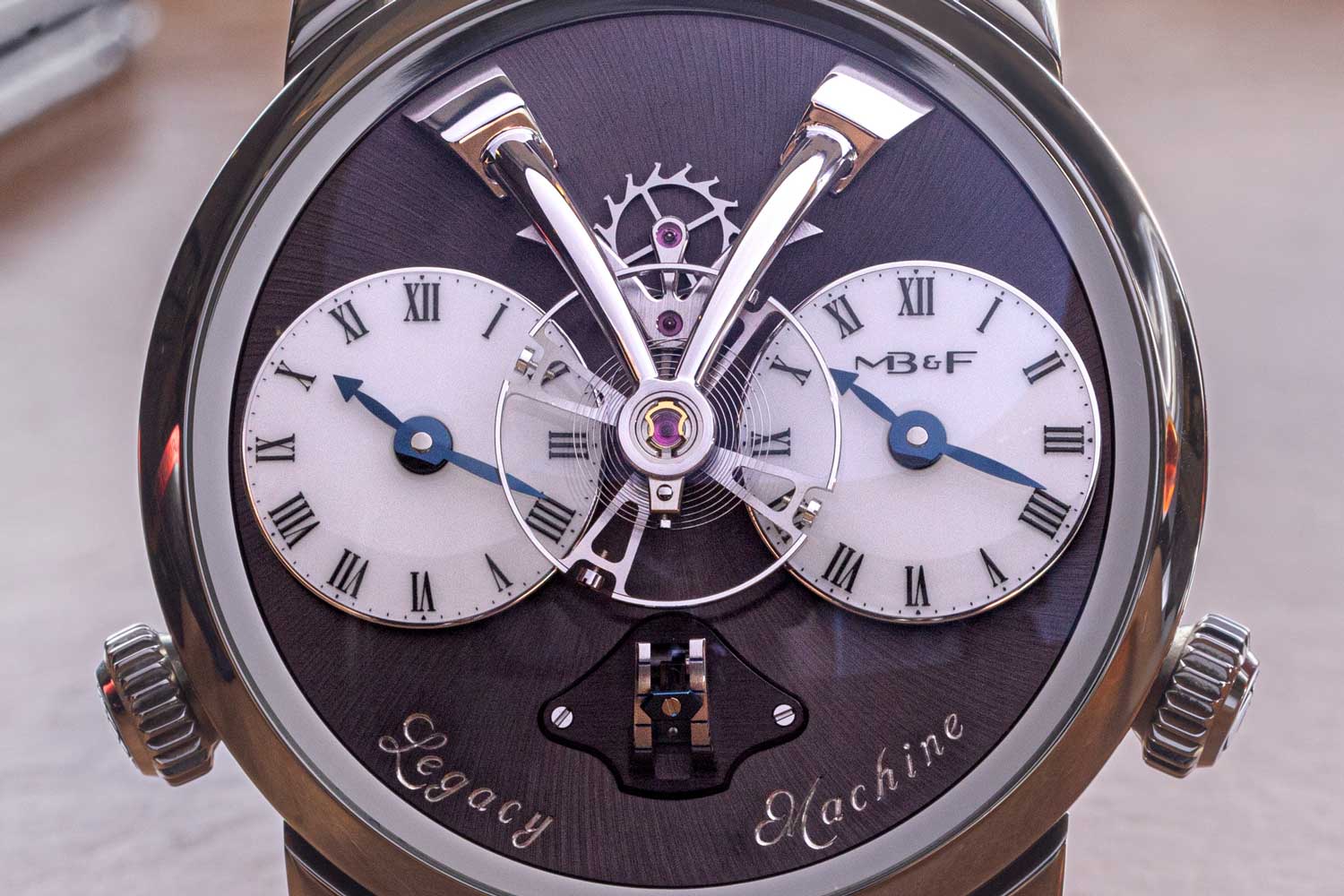
Icon of the Legacy Machines, here on the LM1 is an oversized 14mm balance wheel with four traditional regulating screws flies above the movement and the independently set dials (©Revolution)
I was really excited and so, of course, I asked him to collaborate with us on this project. He shook his head saying, “No, I’m sorry I just don’t have the time. I’ve got all my watches to finish.” But he kept looking at the image of the dial and at some point, he had designed the whole movement on a piece of paper. At which point I said, “Kari, I think you’ve already done a lot of the work.” He laughed and finally agreed to help out. That was how Kari Voutilainen ended up collaborating with myself and Jean-François on the LM1.
I was, of course, beyond flattered that one of horology’s greatest artisans and masters of watch finishing wanted one of my watches. With my Horological Machines, people would look at them more from the perspective of art or sculpture for the wrist even though they are finished to the very highest level. But with my Legacy Machine, everyone gets their loupes out and start poring over every bevel of the movement. Maybe it is the effect of a round watch, but that’s the thing. I am excited when they do this because I know they will discover finishing at the very highest level imaginable — something that I attribute to Kari. I love the story of the Legacy Machine 1, and I love the relationship it created between Jean-François, Kari and myself.
Legacy Machine no.2: Philippe Dufour
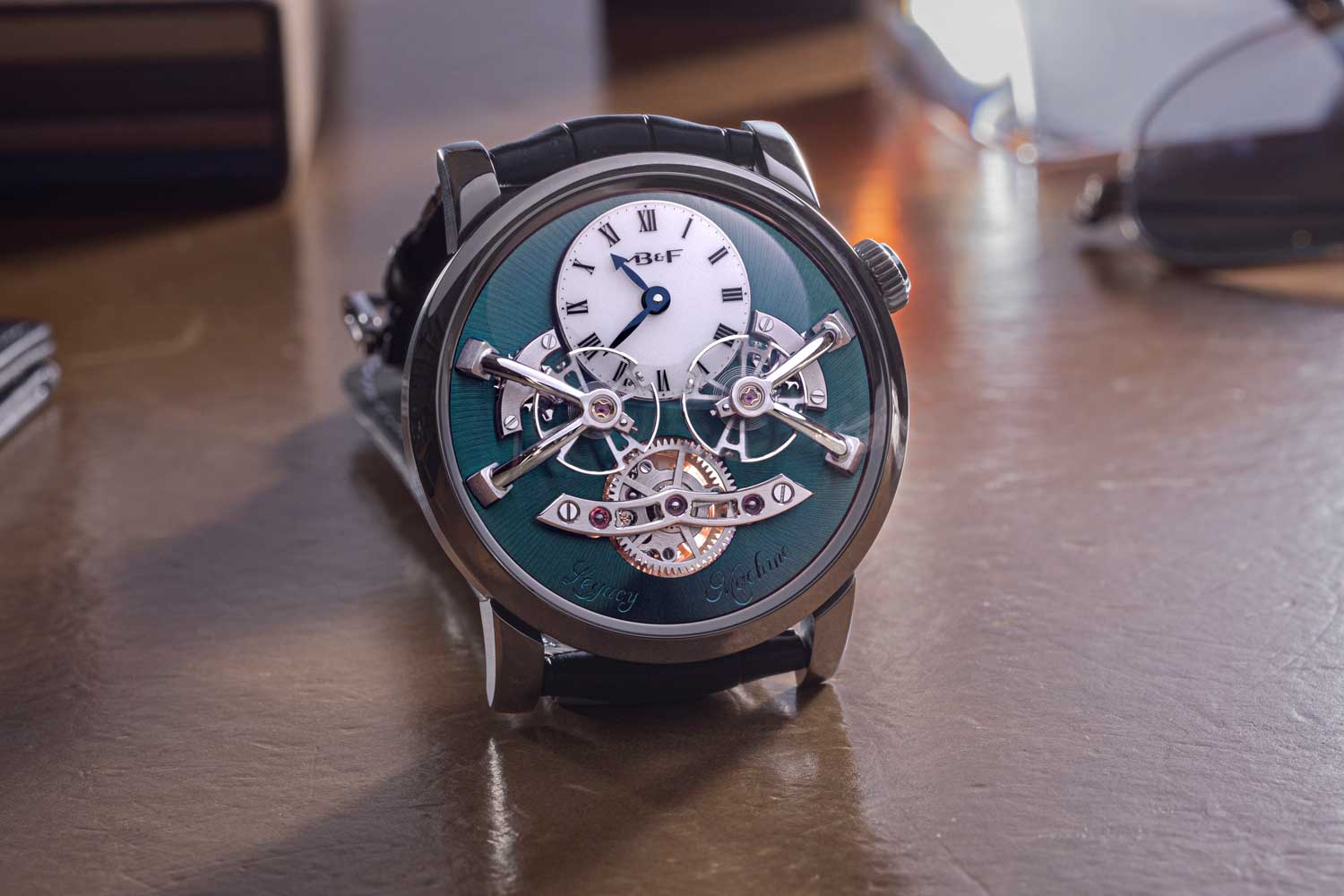
In creating the LM2, Max Büsser took inspiration from Philippe Dufour's Duality (©Revolution)
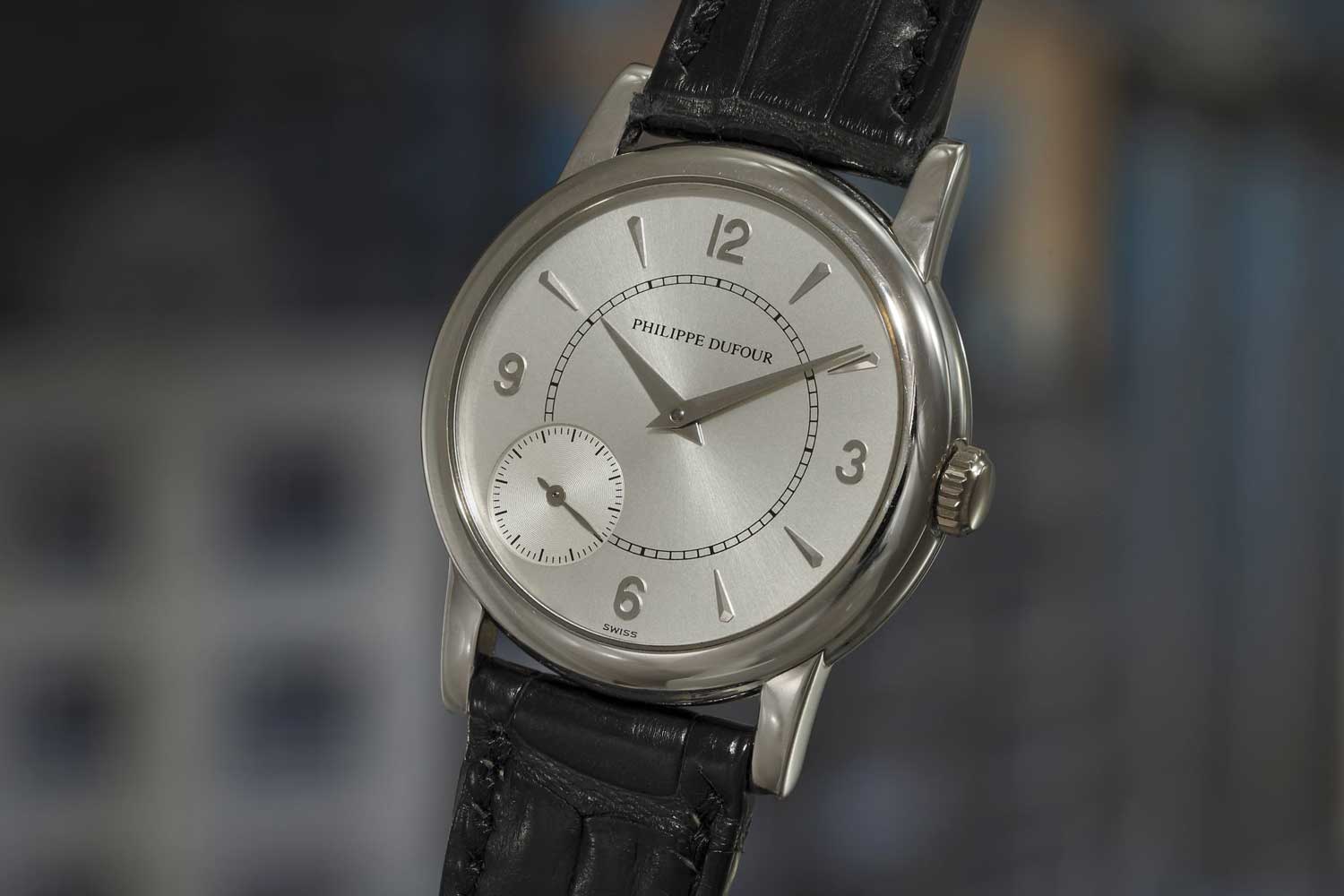
In 1996, Dufour introduced his iconic Duality, the world’s first wristwatch incorporating a double escapement. Featuring two independent balance wheels compensated with a central differential gear, the mechanism improves accuracy while also countering the effects of gravity. He initially planned to produce 25 examples, however only nine were made including the present watch with the extraordinary number ‘00’ - the very first Duality made by the master himself; this exact piece sold with Phillips in 2017 for USD 915,000 (Image: phillips.com)
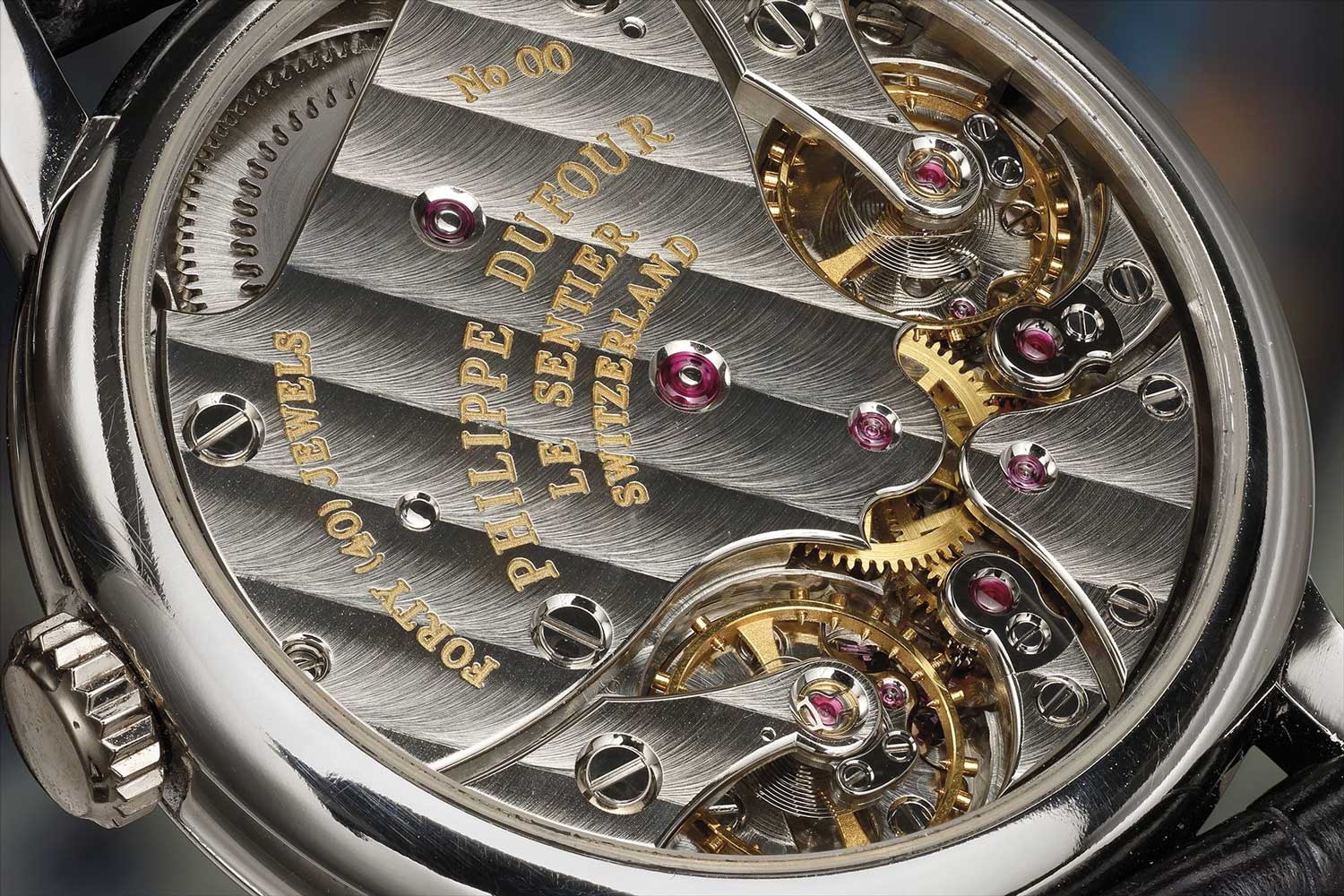
Caseback of the Duality showcasing the double escapement escapement on the watch's movement (Image: phillips.com)

In creating the LM2, Max Büsser took inspiration from Philippe Dufour's Duality (©Revolution)
Since the defining theme of my Legacy Machines is the balance wheel taking center stage on the dial, I thought, why not have a watch with two balance wheels with their results averaged through a differential? I was always curious about why Dufour only made eight watches for Duality. It seems funny in the context of Duality trading for nearly a million dollars at auction today. One day, I had the opportunity to speak to him about this and he replied, “At the time nobody understood the watch and no one else wanted one. I made eight and there was no demand for a ninth.”
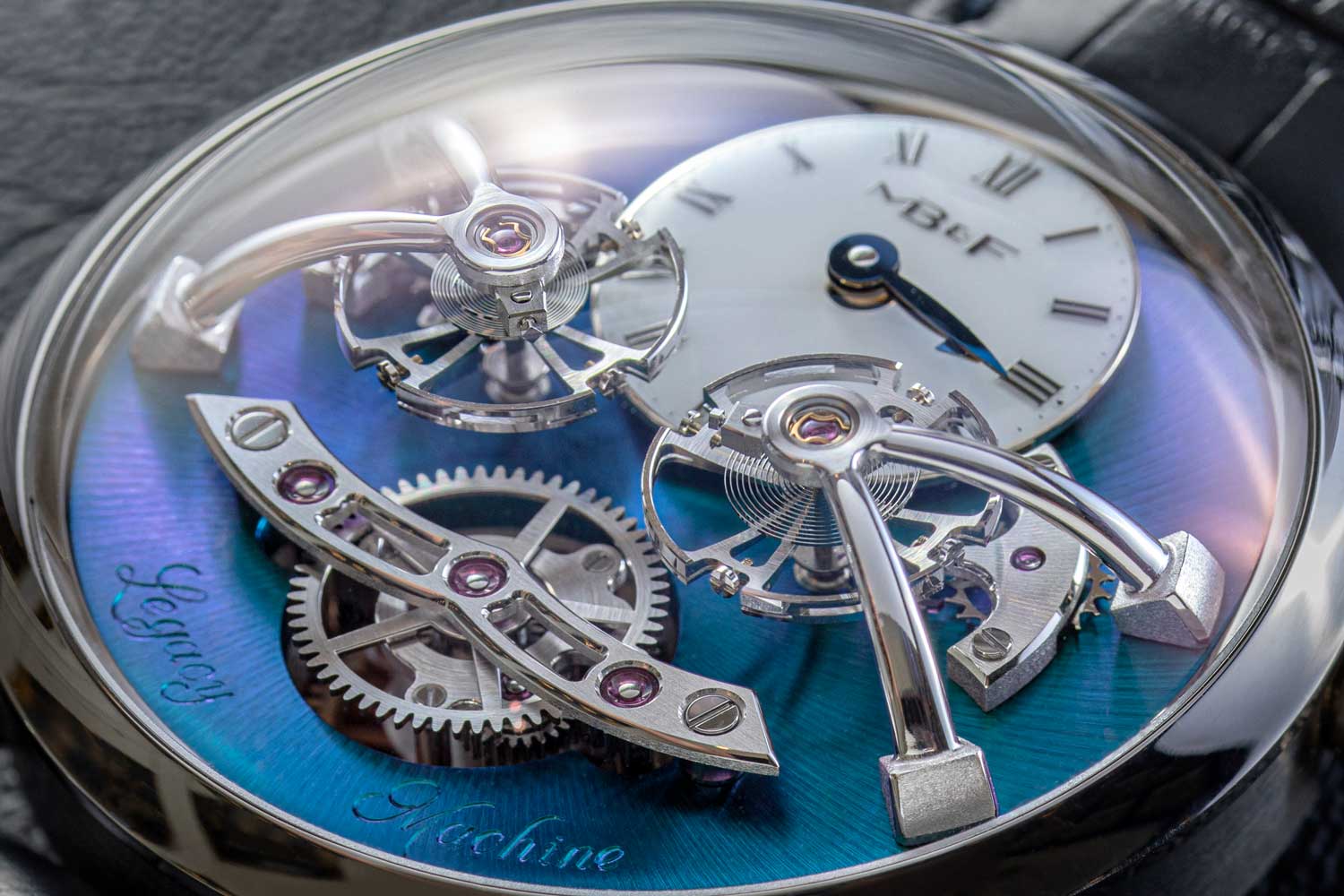
The LM2 has not just one but two bespoke 11mm balance wheels flying above the movement and dials (©Revolution)
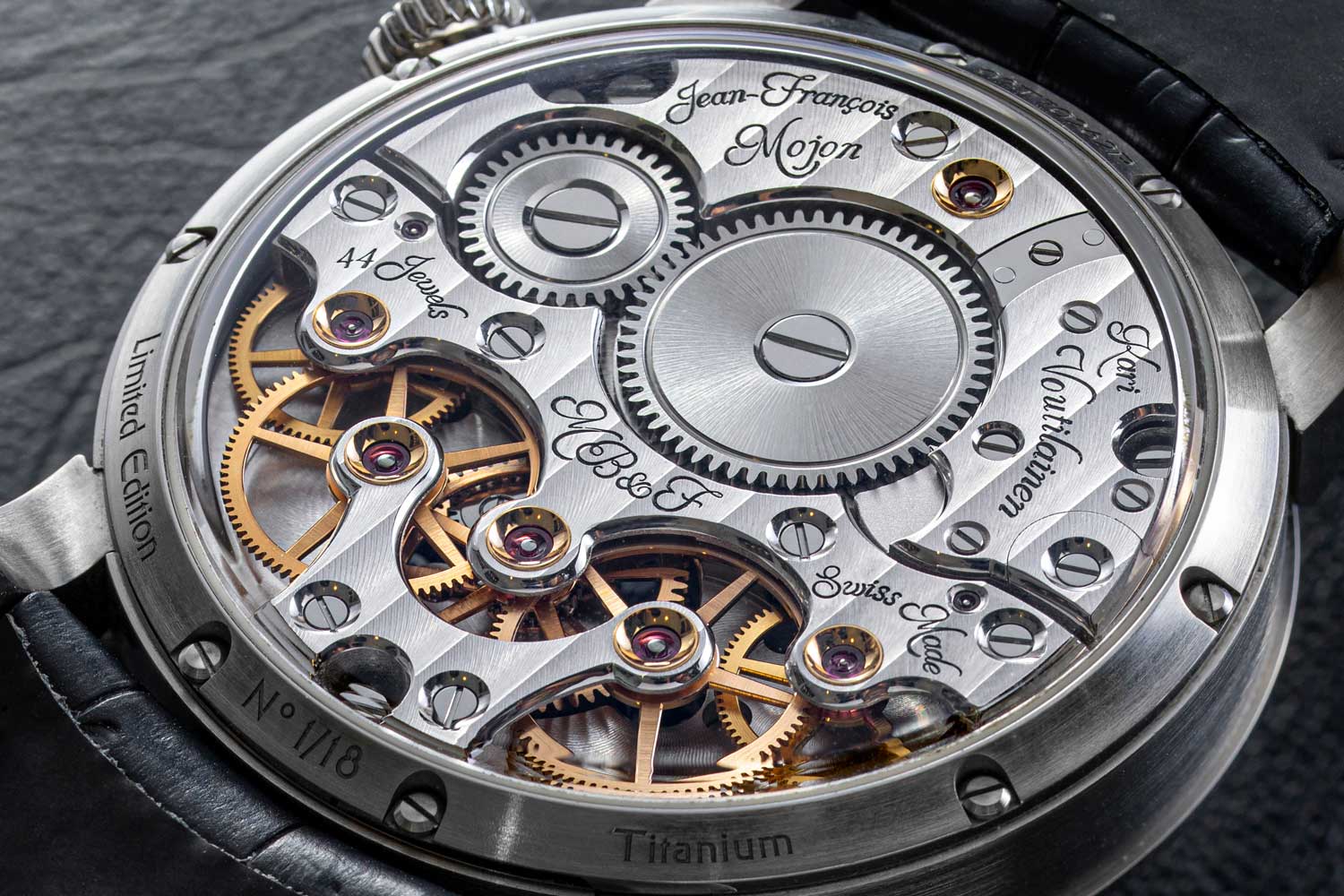
The planetary differential used for the LM2 presents a great advantage in that he two balances beat at their natural rate, with the differential supplying the average of the two completely independent frequencies; this results in a summed rate with fewer variations (©Revolution)
Legacy Machine Perpetual: Stephen McDonnell
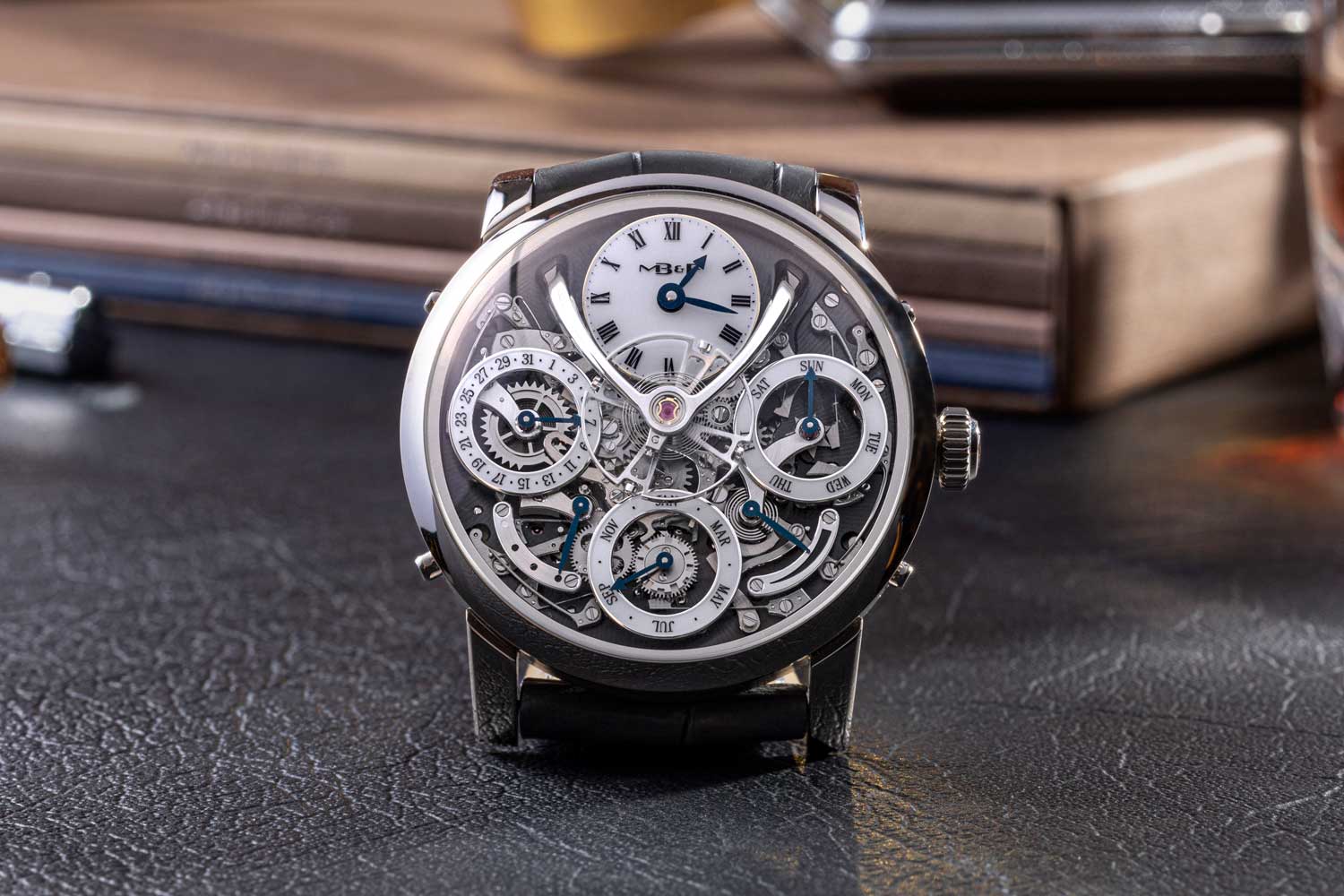
The LM Perpetual is a 21st century take on a the time honored Perpetual Calendar complication, but with several improvements to eliminate the drawbacks of conventional perpetual calendars; the 581-component, fully integrated and purpose-built movement of Legacy Machine Perpetual has been designed for user-friendly and trouble-free use: thanks to an innovative “mechanical processor”, no more skipping dates or jamming gears, and the adjuster pushers automatically deactivate when the calendar changes, so no problems there either (©Revolution)
The people at STT greeted us and explained that they simply didn’t have enough capacity to work on my movements. They wanted me to take the unassembled parts and leave. I think you know that I am not a “groveler,” but this was the one instance in my life where I truly groveled. My entire life savings was in those parts; without anyone to assemble them, they were meaningless. I kept saying, “Please don’t do this. It will destroy my brand before it’s even started.” They kept politely but firmly declining. Suddenly I felt Peter’s hand on my arm. He looked at me and said in English, “We will sort it out.” Then he guided me out of the room.
Moments later, we were in my car with these trays of watch components. Peter was furiously dialing every watchmaker he knew that might be able to assemble the movements. But they kept turning him down. To each person he simply but very directly said, “You owe me,” and then he would hang up the phone. I cannot express how grateful I am to Peter Speake-Marin. If it were not for him, the story would have ended there. And yes, I am acutely aware I also “owe him big time.”
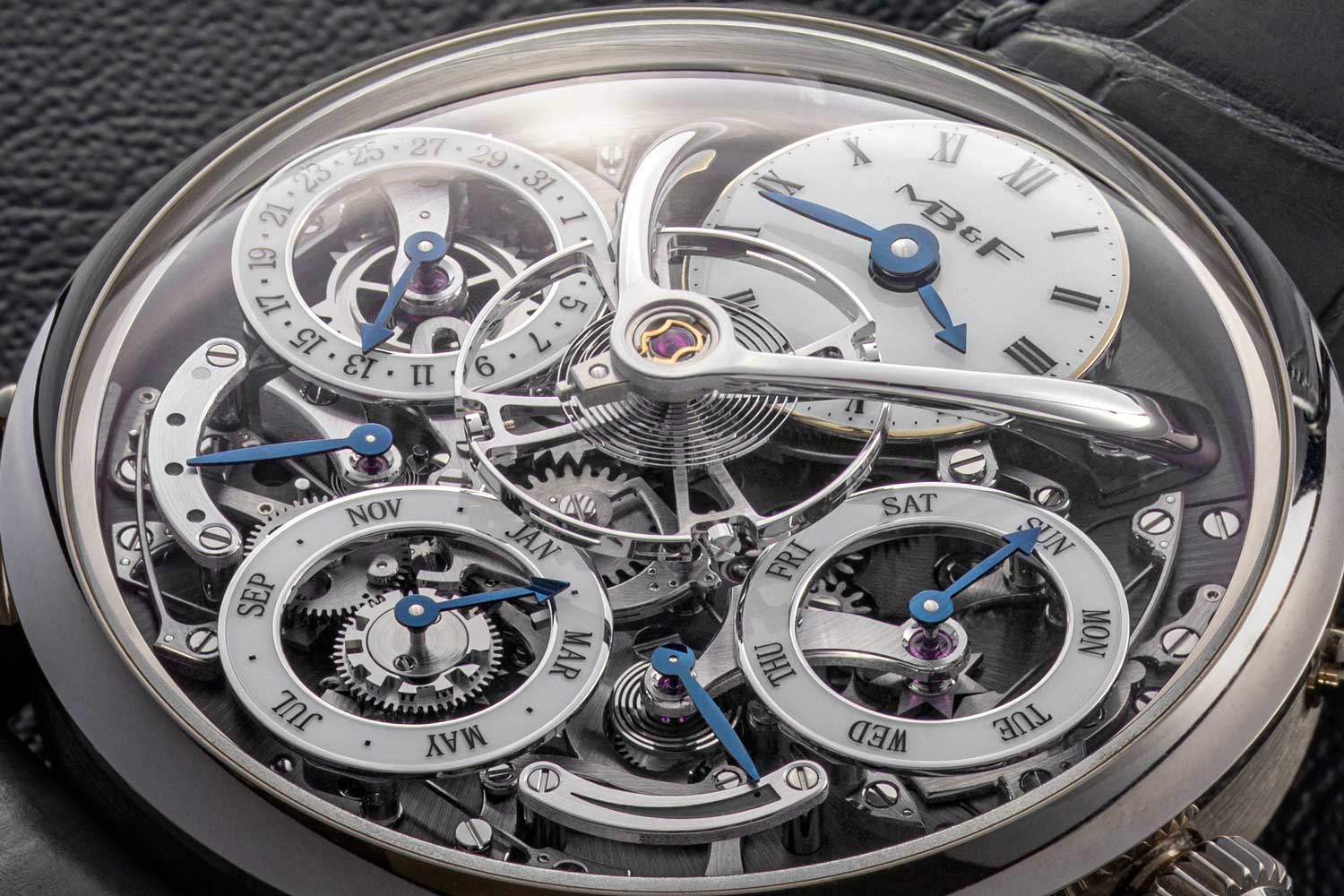
The 14mm balance wheel of the Legacy Machine Perpetual, and its indication dials hover above the movement, offering a perfect view into the 581 components of the movement conceived by Stephen McDonnell (©Revolution)
Cut to several years later. I had launched the Legacy Machines and, to my surprise, they had opened up a whole new client base and started a new adventure in my life. I was catching up with Peter Speake-Marin and we were reminiscing about the start of MB&F with the humor of people who had avoided a potential disaster. The subject turned to Stephen, and Peter said, “Well, it’s a real shame what happened to Stephen.” Stephen had signed a contract to create a movement for an individual who had pulled out.
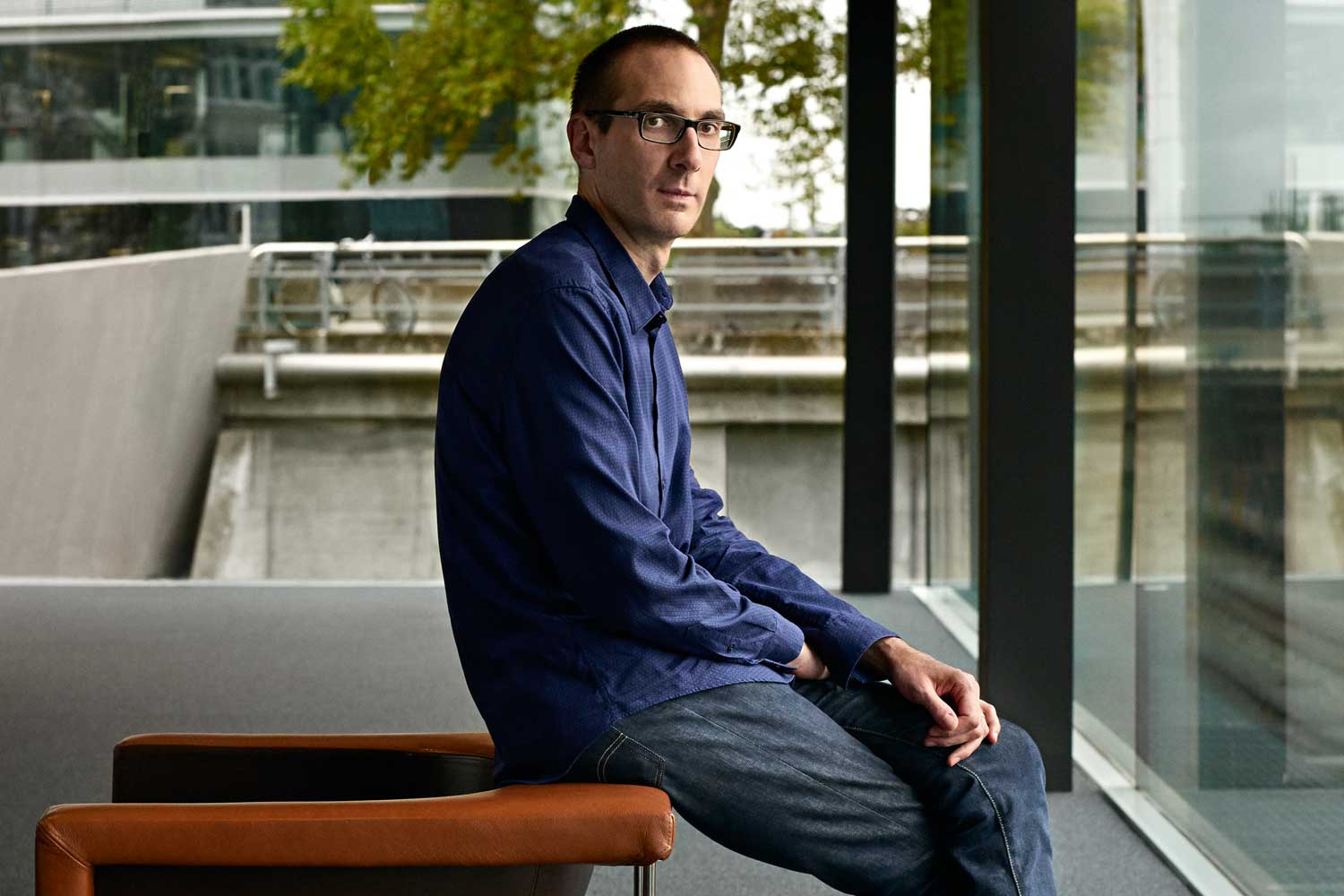
Theology graduate from the Oxford University and watchmaker, Stephen McDonnell who was instrumental to MB&F's launch of the HM1 and eventually the person who conceived the LM Perpetual from the ground up (©MB&F)
From my experience, this complication is what I like to call a boomerang. It goes out to the client and then, for various reasons — because they are fragile and often because the client doesn’t read the instructions and operates the correctors in the wrong sequence or during a date changeover — the watch ends up coming back to you over and over again. “Yes, that’s because the design of the perpetual calendar is fundamentally flawed,” Stephen said. He explained that all perpetual calendars were calibrated to have 31 days in each month and then the movement compels a jump forward on days that have less than this, which is six times a year. For him, that is where the problem starts. Instead, he wanted to have each month at 28 days, then add three additional days in the months where applicable.
I asked if he had already designed this movement and he replied he had not, but that he could see it in his mind. I thought about it and decided that I owed him a debt of gratitude. I would fund his project for one year; if we make progress, then great, and if not, then no harm done. But each time we met, I became more excited by the project. In the end, it took three and a half years to create the LM Perpetual, but that is how the project got started.
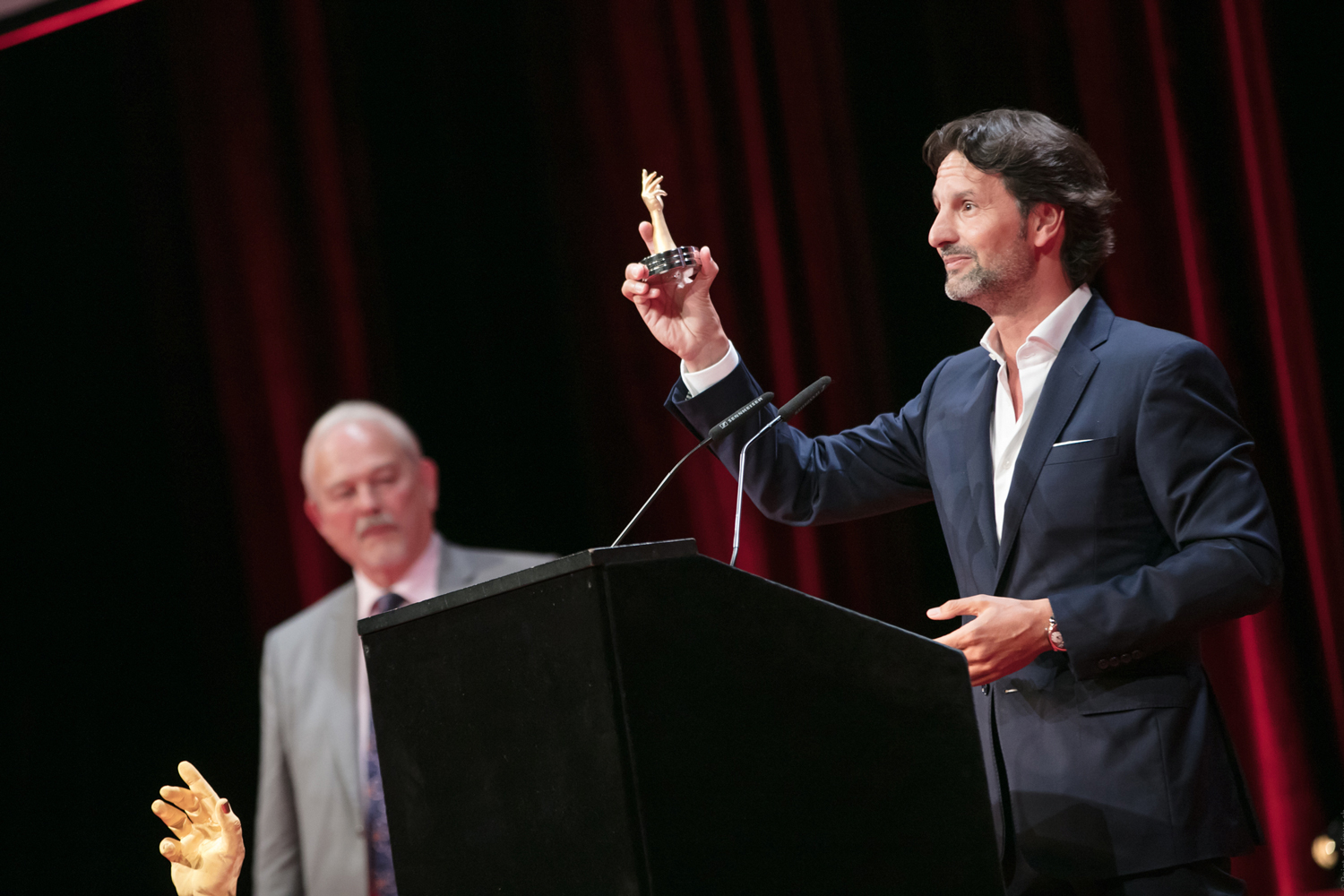
Max Büsser accepting the Calendar Watch Prize at GPHG 2016 for the LM Perpetual; in the background we see Philippe Dufour looking on, who had presented Max with the prize not moments ago, and who was instrumental in the realization of the LM2 (©MB&F)
Legacy Machine Thunderdome: Eric Coudray & Kari Voutilainen
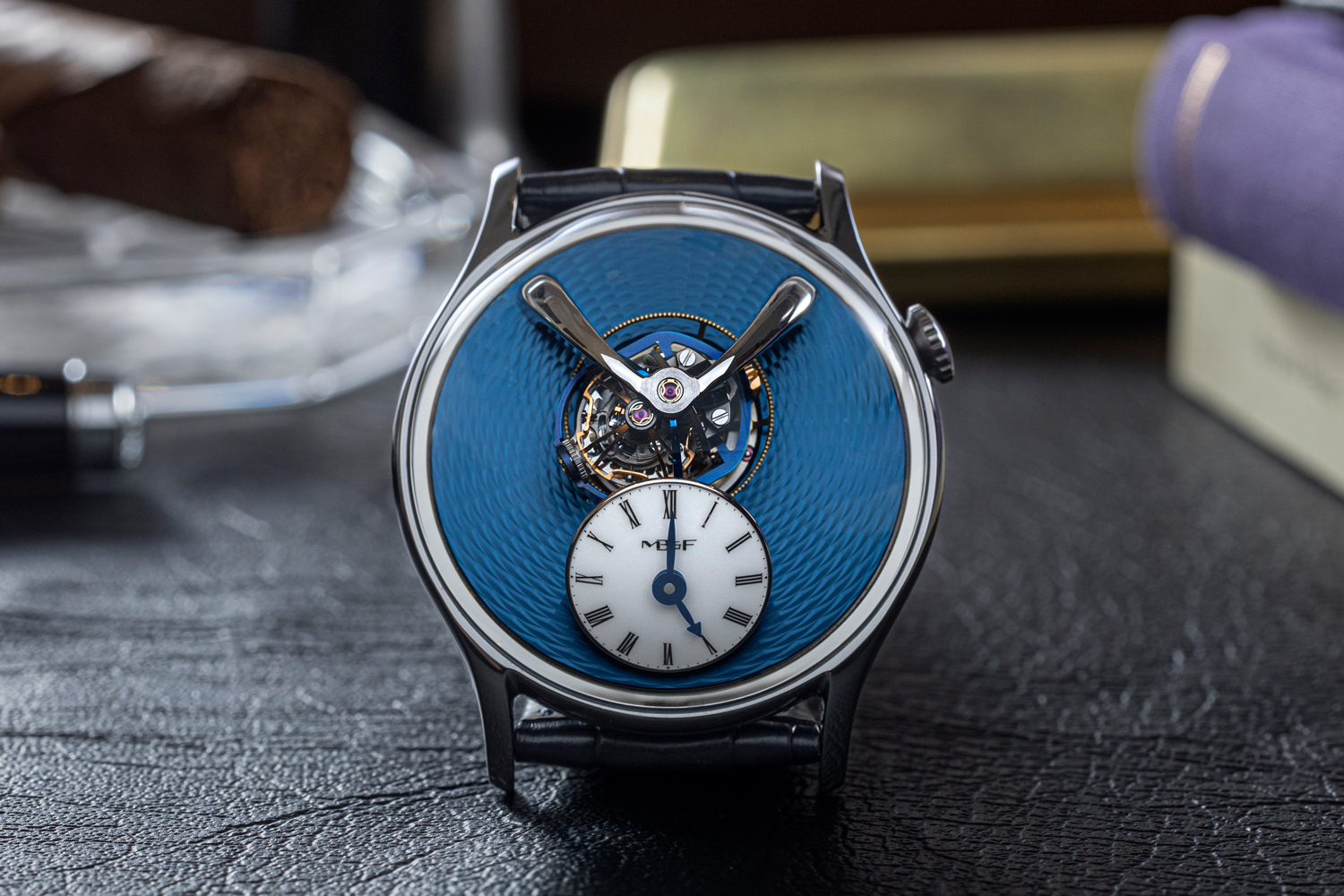
The LM Thunderdome is the result of a collaboration between MB&F and, Eric Coudray – a legendary innovator from the Vallée de Joux known for his unorthodox, jaw-dropping complications – and Kari Voutilainen, a famed perfectionist and acclaimed pillar of traditional craft based in Môtiers (©Revolution)
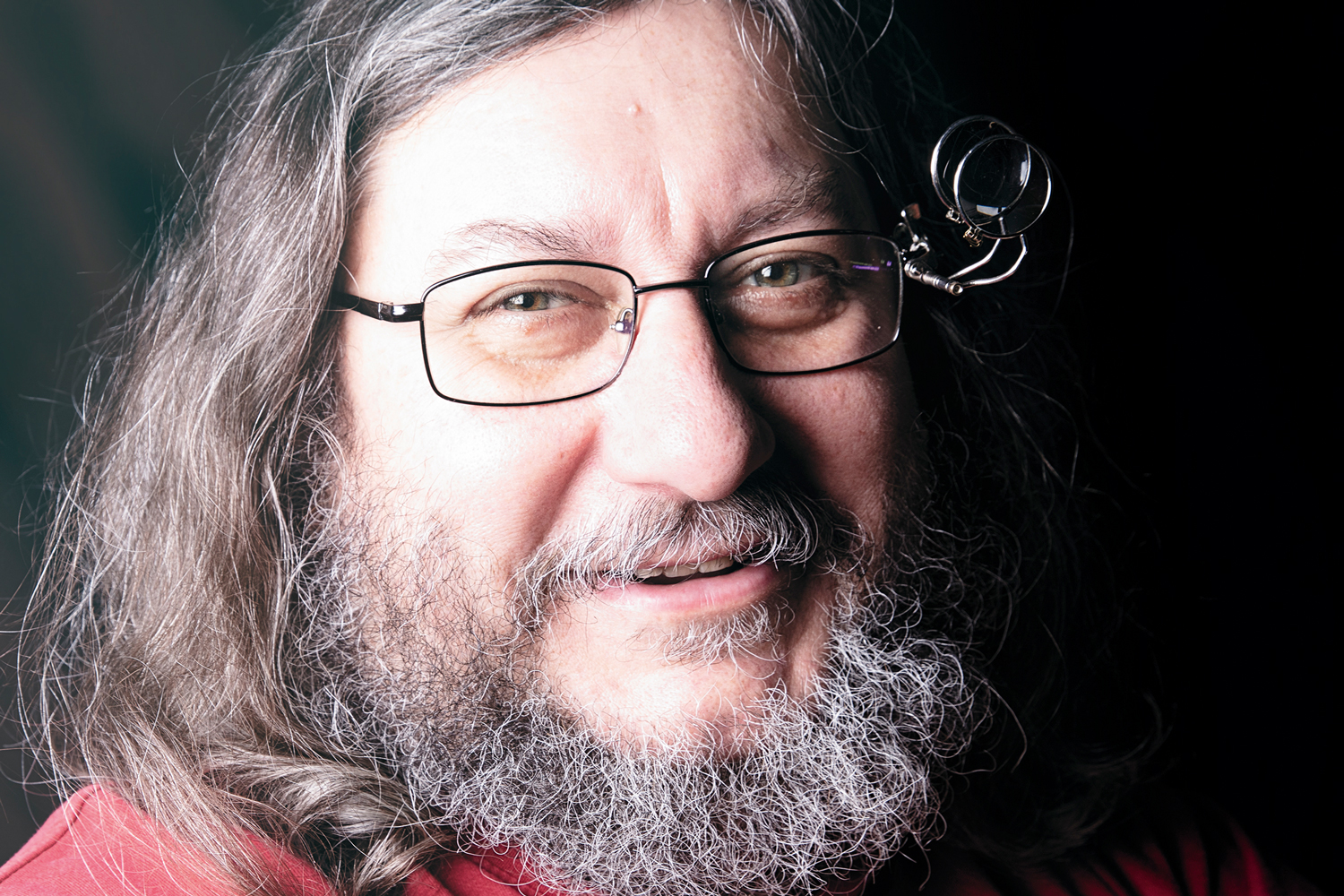
Living legend, Eric Coudray who is perhaps best know as the man who us the Jaeger-LeCoultre Master Gyrotourbillon 1, in 2004 (©Tec Group J.Saillard)
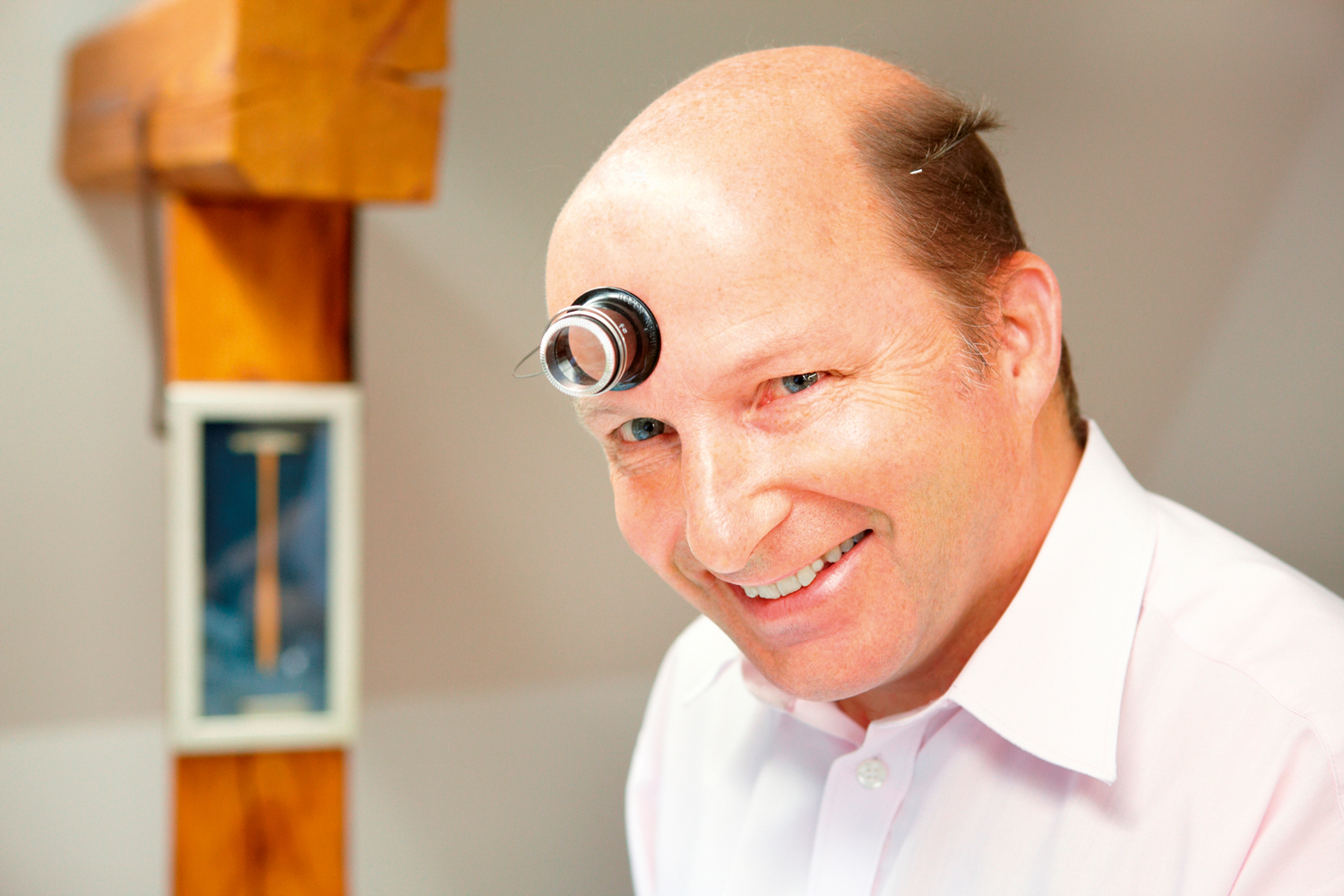
Kari Voutilainen, a famed perfectionist and acclaimed pillar of traditional craft based in Môtiers (©MB&F)
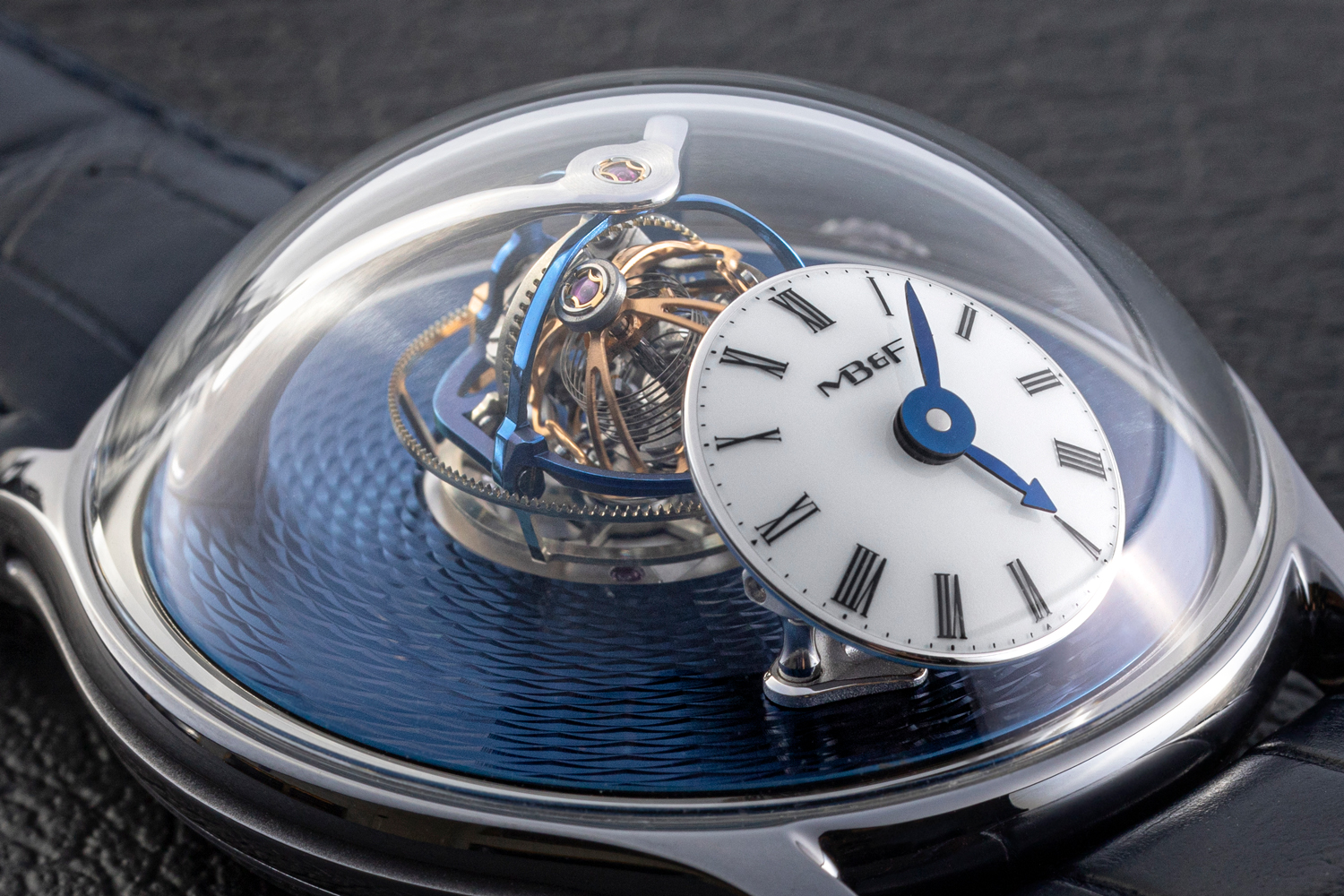
The LM Thunderdome features the world’s fastest triple-axis regulating mechanism with 3 axes revolving in record-breaking 8 seconds, 12 seconds and 20 seconds. It also features a unique combination of Potter escapement, hemispherical balance and helical hairspring (©Revolution)
Legacy Machine 101 MB&F × H. Moser: Edouard Meylan
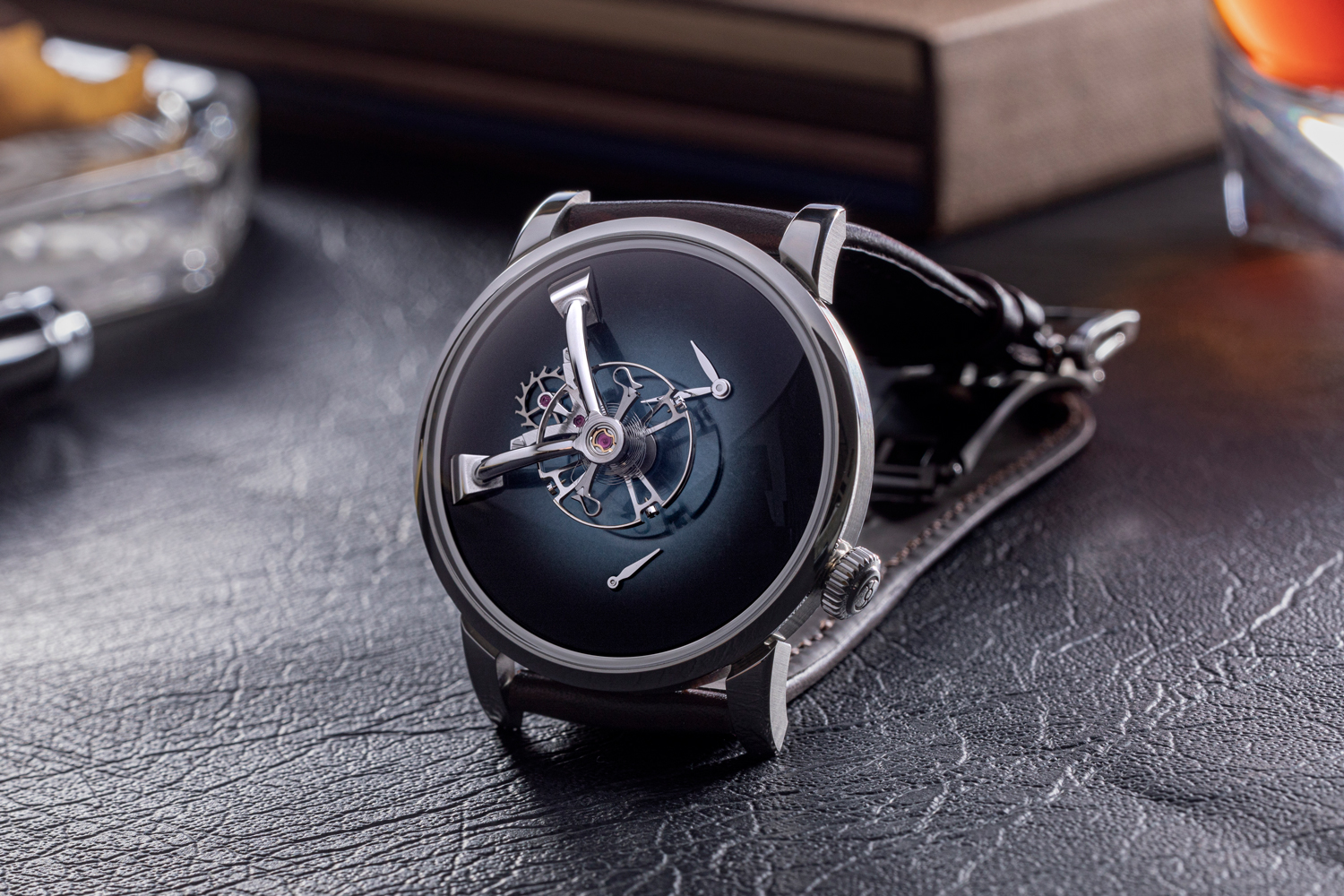
The LM101 MB&F x H. Moser, a collaboration between the two brands takes on H. Moser’s “back to basics” approach embodied in its Concept watch series with the MB&F logo omitted from the dial; the floating time and power reserve subdials have been removed, thanks to hands placed directly on the main dial, allowing to fully express the fumé dials borrowed from H. Moser & Cie; the watch is topped with a domed sapphire crystal, the cases for the LM101 MB&F x H. Mose were made of steel, which is unusual for MB&F (©Revolution)
I remember talking to Edouard at Dubai Watch Week. I loved what he had been doing with the fumé dials and the minimalist charm of the Concept watches, and I asked him if he would like to collaborate together on a watch. e aHeThe first thing he said was, “You should use our double hairspring.”
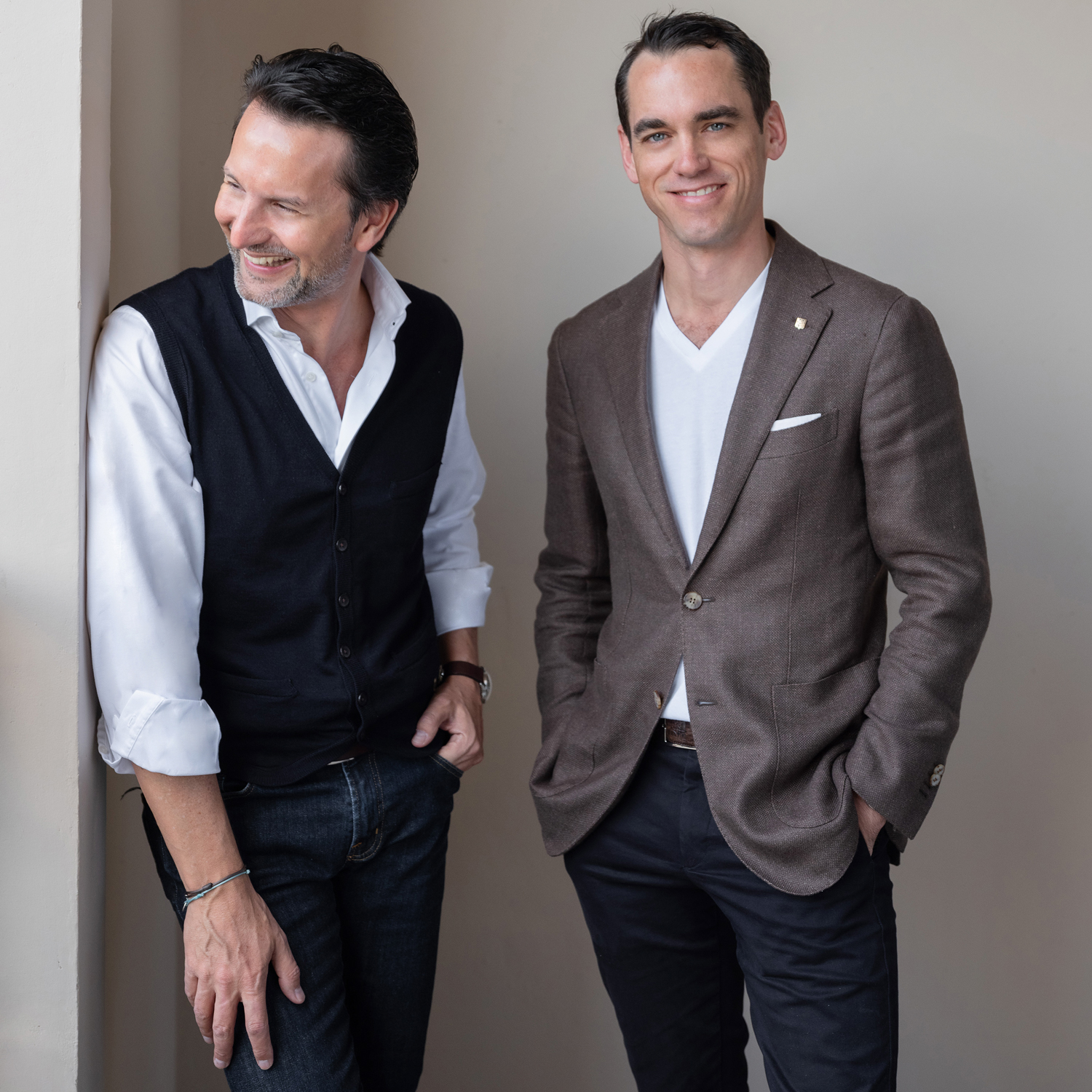
Max Büsser founder of MB&F and Edouard Meylan, CEO of H. Moser & Cie., both found their individual independent brands 15 years ago; long time friends and now finally collaborators
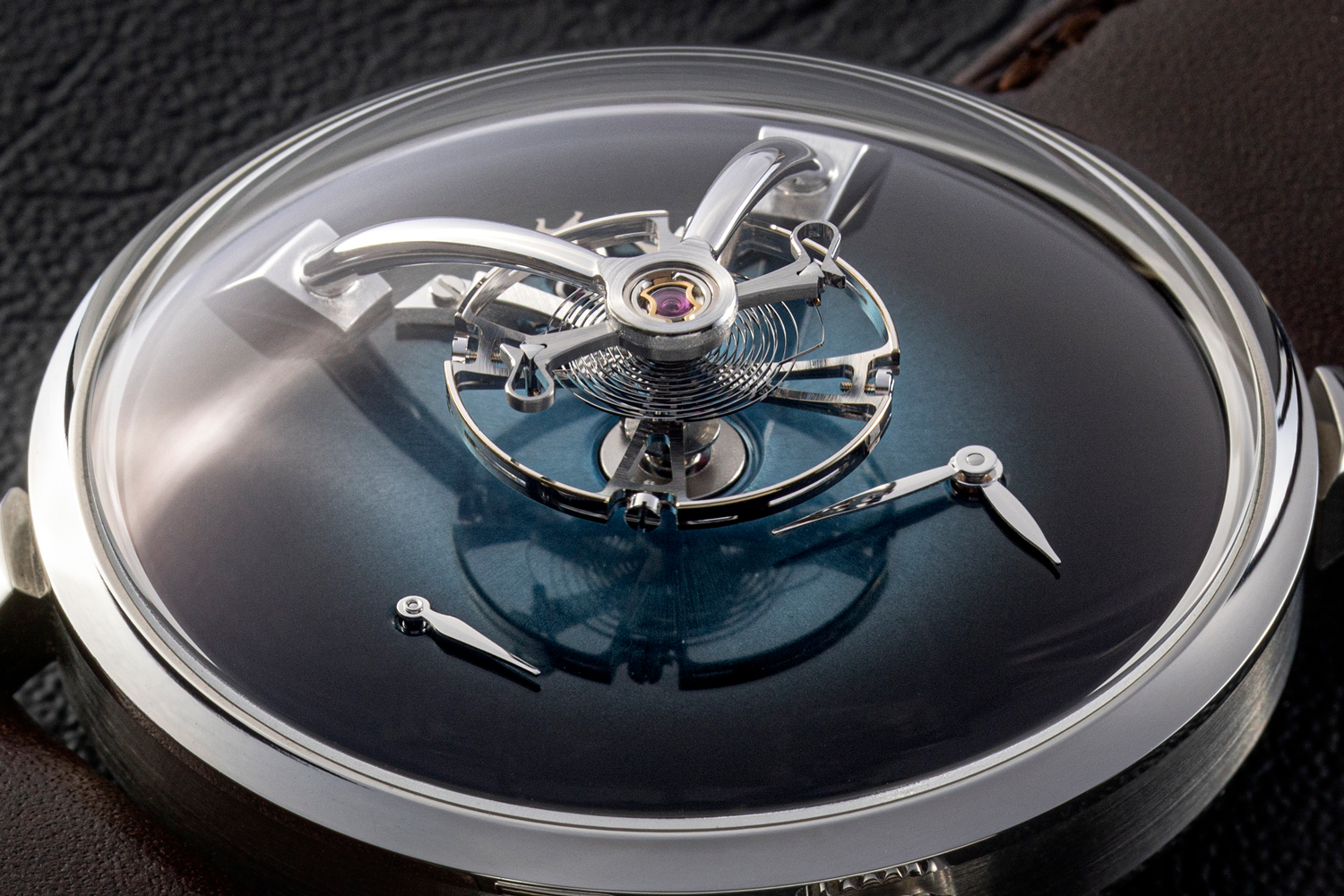
The LM101 here with no subdials or brand indications just like Moser’s Concept watches, fume dials and MB&F's signature balance wheel, but now with the double hairsprings of H. Moser's (©Revolution)
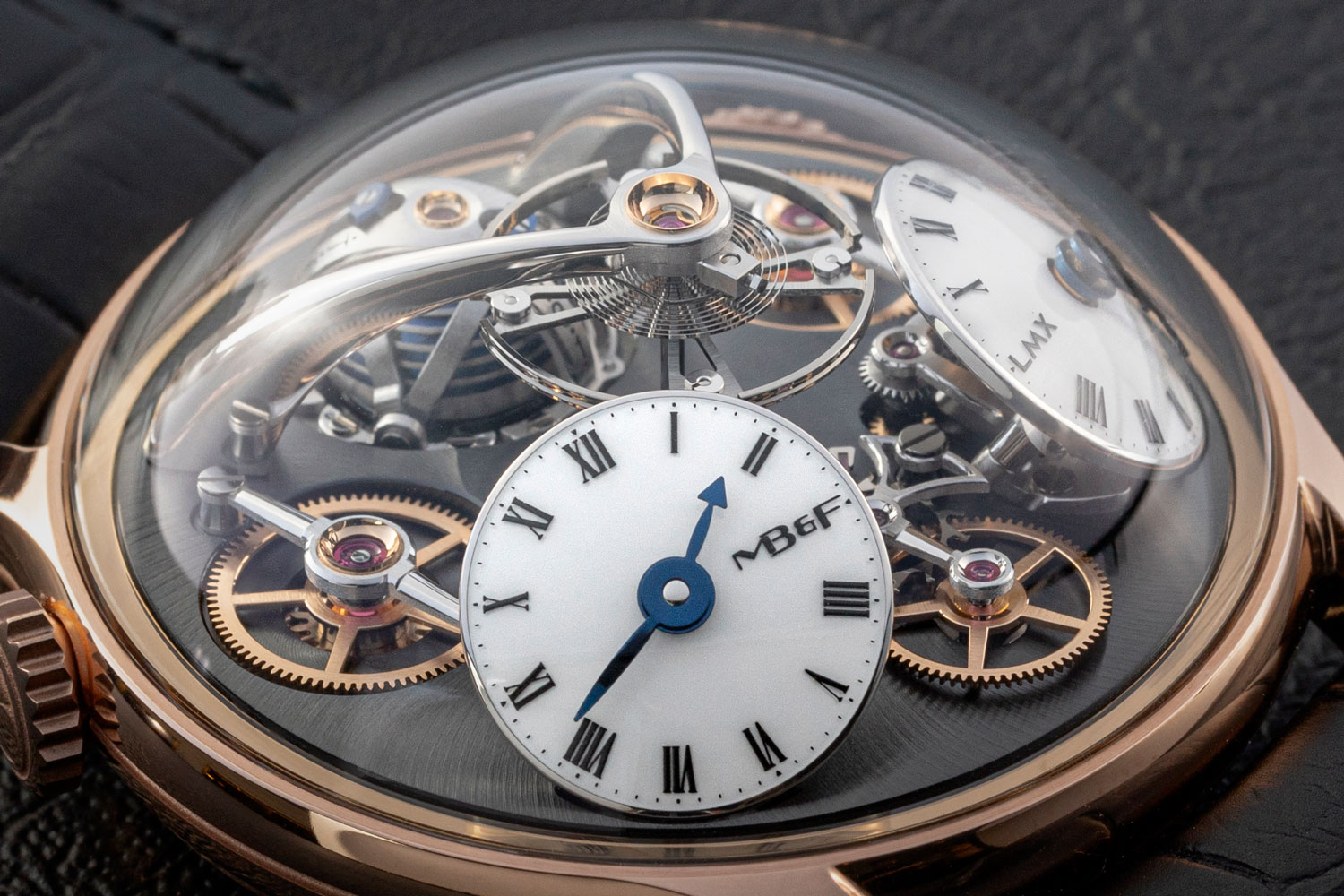
The MB&F LMX in 18k 5N+ red gold with black NAC treatment on plates and bridges (©Revolution)
MB&F and The Hour Glass present “10 Years of Legacy Machines – A Retrospective Exhibition”
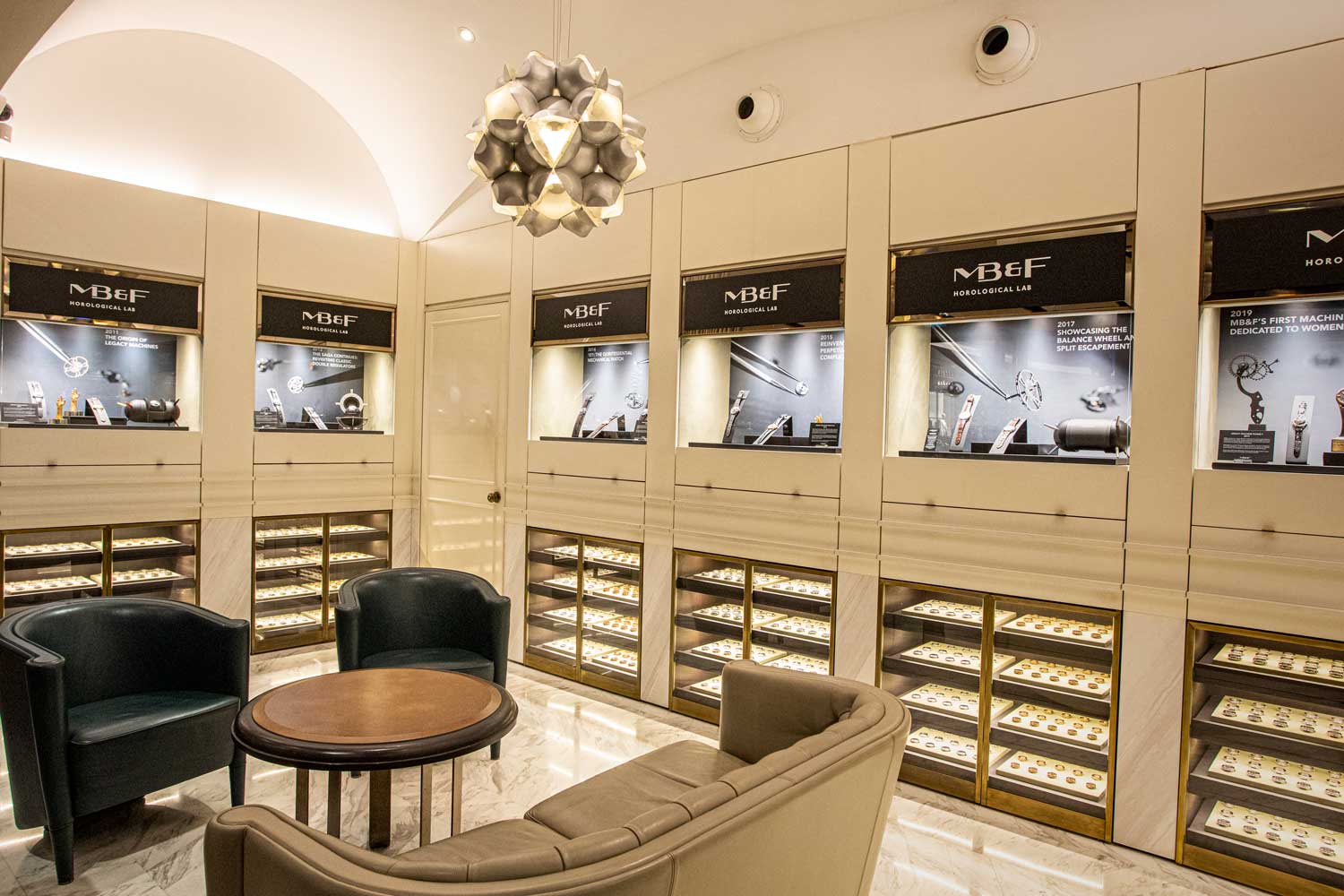
MB&F and The Hour Glass present “10 Years of Legacy Machines – a Retrospective Exhibition” at L’Atelier by The Hour Glass from 25 March to 15 April 2021
Watch enthusiasts will be welcomed at L’Atelier by The Hour Glass , the boutique dedicated to independent watchmaking located in the heart of Orchard Road. Visitors will discover the first-ever retrospective collection of Legacy Machines, from the original Legacy Machine No1 created in 2011 to the new LMX, which will be released officially on the eve of the exhibition. No less than 23 different Legacy Machine models will be on display, including pieces sent especially for the exhibition from MB&F headquarters in Geneva.
Exhibition Details
25 March – 15 April 2021 (Open to Public)
L’Atelier by The Hour Glass
2 Orchard Turn #03-06 ION Orchard, 238801
More information: thehourglass.com










